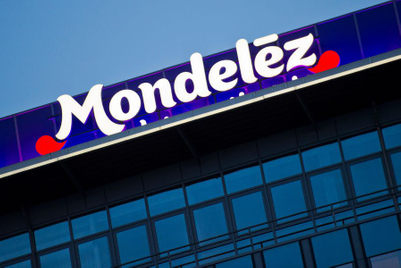
Whether you call it 11.11, Double-11 or Singles' Day, Alibaba's big event Saturday (officially called the '11.11 Global Shopping Festival') is nearly impossible to overhype. We've been previewing this year's sale from a marketer and agency point of view this week, and this reporter will live-blogging from the epicenter Saturday. Before the virtual cash registers start to ring, we've gathered forecasts and insights into key questions surrounding China's epic carnival of consumption.
How are consumers planning to fill up their online shopping carts this year?
Despite being able to preorder three weeks in advance, 96% of Singles’ Day shoppers say they will shop on the day itself, 11 November, according to a survey by Fung Global Retail Tech (FGRT), with apparel the most popular category.

How much will people spend?
On average, Singles Day shoppers plan to spend US$324 (RMB2,126) this year, found FGRT. Those who indicated they will start shopping early tend to have a higher budget: up to US$454 (RMB2,981).
Separate research from YouGov Omnibus finds that around six out of ten Chinese consumers budgeted more than RMB1,000 this year. This is up from 49% who said the same last year.

Does Alibaba own the entire day?
While Tmall or Taobao will make the most revenue, 61% of consumers plan to shop on rival JD.com, according to the same Fung Global Retail Tech survey.
What sales milestones are expected, and will the numbers be reliable?
Last year, presales and actual purchases during the 24-hour period represented over one-fiftieth of China's annual ecommerce sales, with some brands even making half of their annual turnover on the day, according to China Skinny.
This year, one sales prediction, from consulting firm Oliver Wyman, came up to RMB152 billion (US$22.9 billion). Alibaba touts a total of US$17.8 billion from last year's shopathon, US$11 billion more than Black Friday and Cyber Monday combined.
However, Alibaba's big number is not pure revenue, but "gross merchandise volume" (GMV), which the company has defined as:
...the total value of orders settled through Alipay on Alibaba's China and international retail marketplaces. It is reported on a real-time basis and includes shipping charges paid (where applicable).
The numbers have been questioned in the past by the US Securities and Exchange Commission, and there have been accusations of inflating by “brushing”—the practice of merchants sending out empty boxes.
GMV clearly does not account for returns. Almost one in four shoppers surveyed by Fung Global Retail Tech said that they had requested either a refund or exchange of goods they purchased during last year’s Singles’ Day. More than half said they expect to request a refund or exchange this year.
According to Alibaba CEO Daniel Zhang, GMV is a "very efficient way" to measure the results of 11.11, but the "number of participants, the level of service, the number of new products and number of people who are impacted online and offline" are all possible evaluations.
How are the companies integrating online and offline?
Alibaba created what was then called Bachelors' Day in 2009 and took ownership of the show by trademarking the date combination in Chinese for 11 November. Alibaba’s closest competitor JD launched its own Singles’ Day sale one year later, but is unable to use the Chinese-language trademark. Its sale this year is roughly translated as '11.11 Global Goodies Festival'.
JD is unable to match Alibaba's clout of 549 million active users, so it has struck alliances with Walmart (one of its shareholders), Tencent, Baidu, Toutiao, Sogou and NetEase to target shoppers accordingly. The 'JD-Tencent Retail Marketing Solution', for example, will combine purchasing history with data on Tencent social platforms and give online discounts to WeChat Pay users who are shopping in JD's physical stores. Two, users searching for product information on Baidu’s app can buy items directly from JD.com. Also, JD will be able to fulfill customer orders from Walmart’s inventories, thus improving operational efficiencies.
The highlights for Alibaba come in the form of 'smart stores' this year. More than 100,000 physical stores have converted their premises to incorporate RFID tech; facial recognition; mobile gamification with the Tmall cat mascot; VR and AR technology including product displays, 'magic mirrors' and 'cloud shelves'; and cashier-less purchasing.
However, even if Alibaba has been parading its VR and AR interactions, those were voted as the least popular tactic among consumers surveyed by Nielsen, compared to the direct discounts—the simplest and clearest marketing method, they feel.
Any noise from smaller retailers, like Amazon China?
Last year Amazon held only 1.3% of the Chinese online retail market. This year it put out very little in the way of 11.11-branded ads, but has its eye on cross-border sales. In October Amazon set up China's first 'Cross-border E-commerce Comprehensive Pilot Area', which helps 100 brands based in Hangzhou sell products overseas on the Amazon Global Selling platform.
Who's most effective at wooing the most lucrative merchants/brands?
Alibaba's platforms will list 15 million products from more than 140,000 brands this year, out of which 60,000 are international brands. They've been lured with incentives such as site placements and lower service fees, but not without some controversy. According to reports, 40 or so brands were pressured to quit selling on JD in favour of Alibaba.
Will the 'new retail' movement shift people's purchasing behaviour?
The 'New Retail' strategy is Alibaba’s long-term plan to unlock a portion of the currently 82% of Chinese retail sales generated by physical stores.
The term, coined by Alibaba founder and chairman Jack Ma in a letter to shareholders in October last year, means "the integration of online, offline, logistics and data across a single value chain”.
An example of that being manifested in real life will be how followers of L’Oreal’s Tmall online store can receive a push alert on their phones letting them know where the closest L’Oreal counter is offline. This kind of path-finding technology isn't new as it's based on location-based services, although the integration of real-time geo-data is a new wrinkle.
'New retail' goes by many names in the West, such as 'O2O shopping' or 'omnichannel commerce', and while JD hasn't been too high-profile about its own 'new retail' plan, it has been executing it since late last year. It's now planning to open up to 300 bricks-and-mortar stores mainly selling consumer-electronics products by the end of this year, using a franchise model. JD calls its offline stores 'retail experience shops'.
Here's a timeline of the two e-commerce giants' expansion into 'new retail'.
| Date | Alibaba events | JD's events |
|---|---|---|
| Jan 2016 | Alibaba opens first physical store in Tianjin | |
| Jun 2016 | Alibaba increases its stake in mall operator Intime from 10% to 28% | Wal-Mart sells its Chinese e-commerce business to JD in exchange for a 5% equity stake |
| Oct 2016 | Alibaba sets up JV with Suning | |
| Nov 2016 | Alibaba announces acquisition of 32% stake in supermarket chain Sanjiang | JD rolls out first offline retail experience shop in Changsha |
| Jan 2017 | Alibaba announces a bid to privatise Intime to further integrate with physical stores | |
| Oct 2017 | Alibaba pilots Hema grocery stores | JD teams up with Wal-Mart to improve supply chain integration and co-develop offline stores |
With ‘new retail' comes the emergence of new shopping modes—online orders with offline delivery, and online promotions with offline sharing. Online and offline shopping become each other’s channel, with logistics as the link.
In the future, online and offline shopping may no longer result in hostile competition but in a complementary relationship, according to Tommy Hong, vice president of Nielsen China. "Physical stores may offer discounts as great as those of e-commerce platforms,” he said.
Nielsen's report from earlier this week found many reasons why consumers are willing to take part in offline shopping during this year’s Single’s Day. One of the major reasons is “to better judge the quality of products in offline stores“, cited by 69% of respondents. The phenomenon of younger people, under 35, being more active in turning from online platforms to offline is also interesting, pointed out Nielsen.
What issues still remain to be solved?
Logistics systems have come up short in the past few Singles' Days, and efforts to increase delivery capacity continue.
Of more concern to marketers, discounting always means a difficult balancing act. In the frenzy of ‘buy, buy, buy’, brand loyalty is at the back of the queue, said Doreen Wang, global head of BrandZ at Kantar Millward Brown. To reap long-term rewards, brands need strong digital CRM systems so that loyalty programmes kick in right after the event. This must be reinforced with delivering a unique brand experience so that shoppers select their brand over a competitor’s regardless of whether the price is discounted in the next Singles Day, she added.
(This article first appeared on CampaignAsia.com)


.jpg&h=334&w=500&q=100&v=20250320&c=1)
.jpg&h=334&w=500&q=100&v=20250320&c=1)

.jpg&h=334&w=500&q=100&v=20250320&c=1)


.jpg&h=334&w=500&q=100&v=20250320&c=1)
.jpg&h=334&w=500&q=100&v=20250320&c=1)








.jpg&h=268&w=401&q=100&v=20250320&c=1)
.jpg&h=268&w=401&q=100&v=20250320&c=1)
